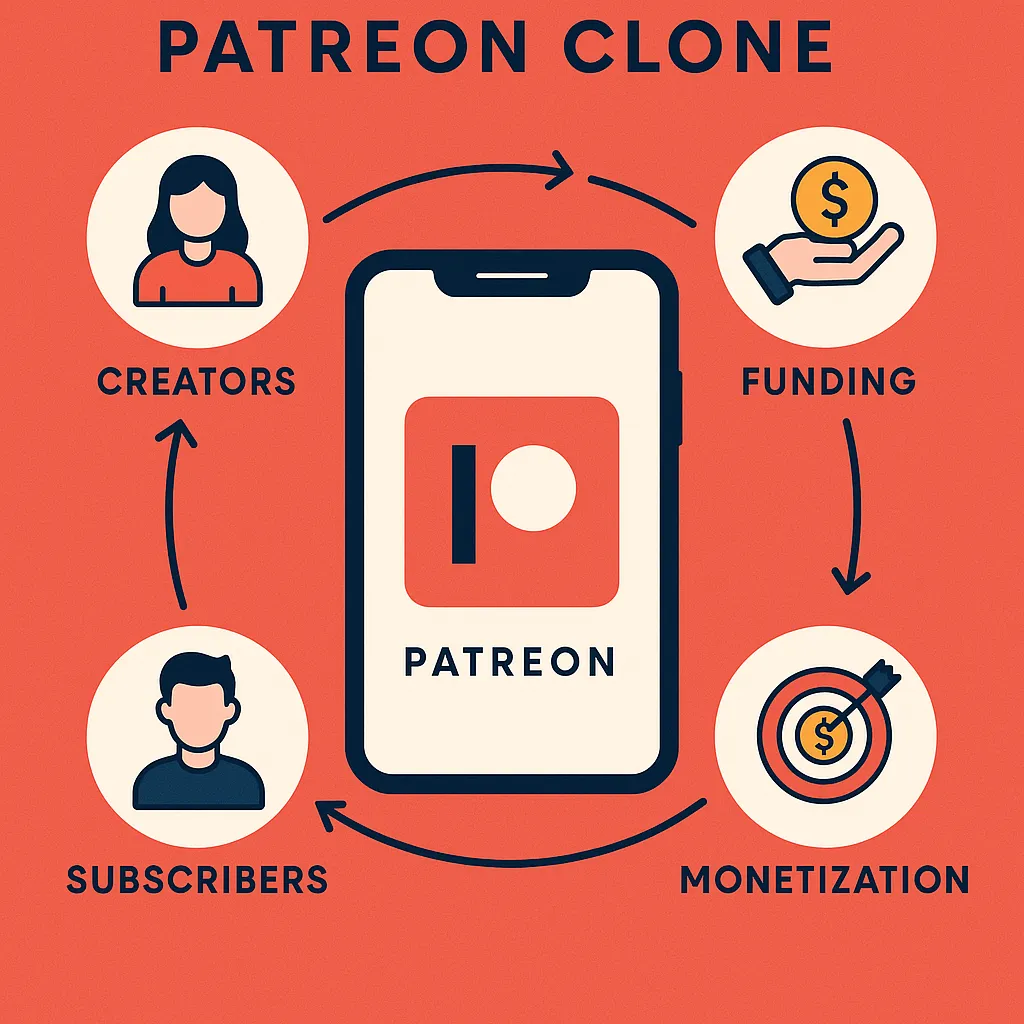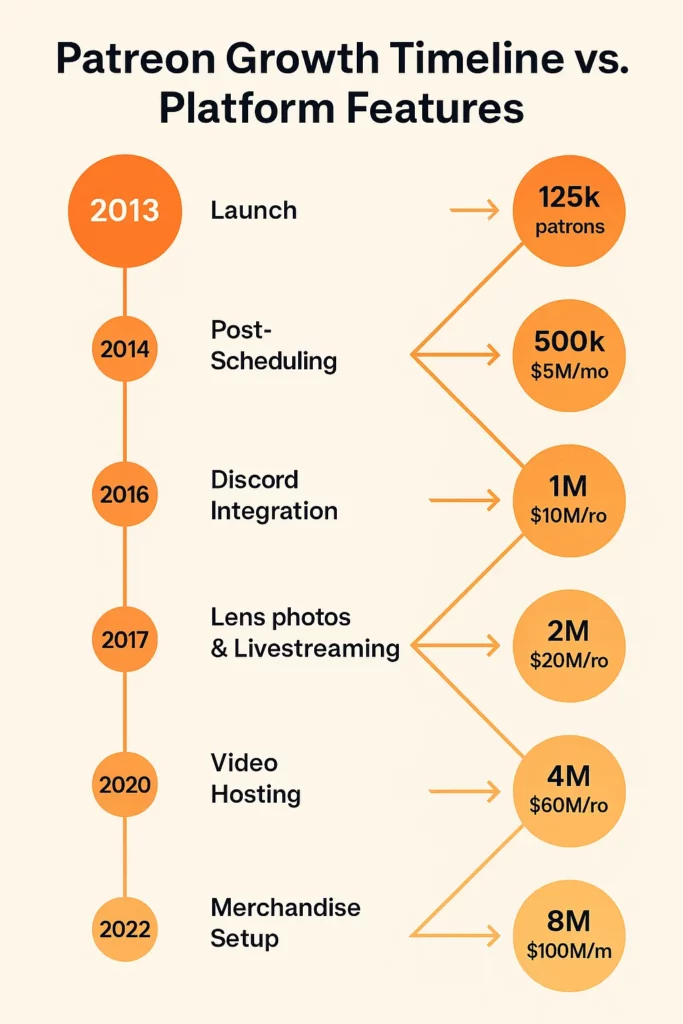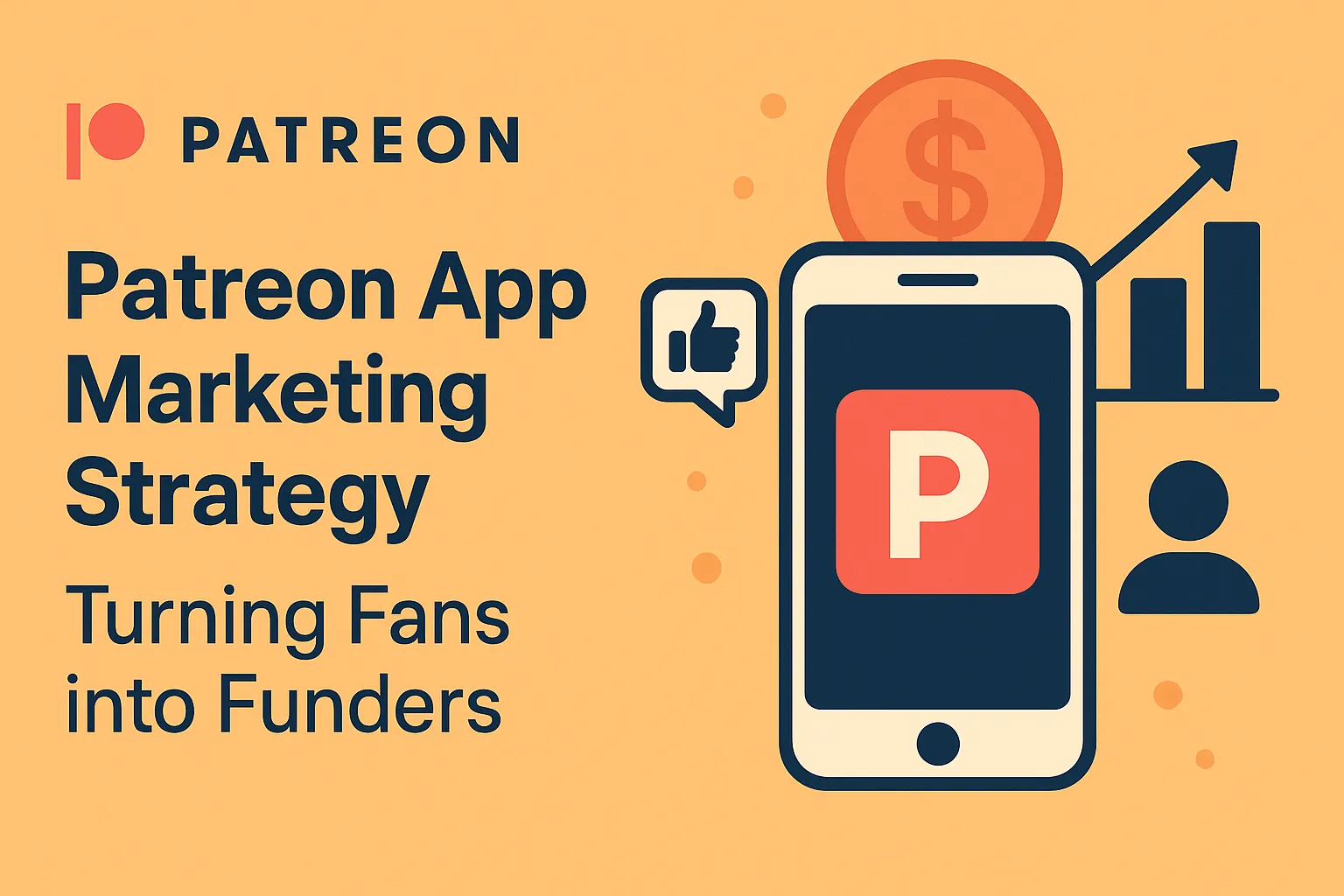If you’ve ever watched your favorite YouTuber thank their patrons, or seen an indie comic artist post “exclusive content for subscribers only,” you’ve seen Patreon in action. It’s more than a platform—it’s a movement. A signal that creators don’t have to rely on ads, merch, or begging brand deals to make a living.
Now imagine building your own Patreon-style platform. You’ve got the dev team. According to TechCrunch the idea. Maybe even the MVP ready. But here’s the big question: how do you actually get creators (and their fans) to show up? Spoiler: launching it on Product Hunt and crossing your fingers isn’t a plan.
This post breaks down Patreon’s real marketing engine—and how to model it when launching your own creator monetization app. And if you’re still building, Miracuves can help you craft a revenue-ready Patreon clone that creators actually want to use.

Why Patreon Works (And Why It’s Hard to Copy)
Let’s be real: Patreon nailed the timing. Creators were done playing algorithm roulette. Fans were ready to pay for deeper connection. And Patreon delivered both.
1. Emotional Marketing 101
Patreon’s messaging wasn’t about features—it was about freedom. “Skip the middlemen.” “Get paid what you’re worth.” They marketed empowerment, not tech.
2. Creator-Focused Design
Their UI made launching a paid tier feel less like admin work and more like fan engagement. Templates, tiers, and launch guides? Check.
3. Built-in Social Proof
When creators saw others making $2k/month from poetry or punk music, they joined. FOMO + visibility = viral loops.
Who Are You Marketing To? (Hint: It’s Not Just “Creators”)
If you’re marketing a Patreon-style app, you’ve got two key audiences—and they couldn’t be more different.
1. Creators (Supply Side)
- Goals: Consistent income, fan engagement, creative freedom
- Pain Points: Burnout, algorithm dependency, content censorship
- Channels: YouTube, Instagram, TikTok, Discord, Substack
“Turn your audience into income—without changing your content.”
2. Supporters (Demand Side)
- Goals: Exclusive access, intimacy, community
- Pain Points: Ads, shallow content, gatekeeping
- Channels: Reddit, fandom forums, X (Twitter), Telegram
“Get closer to the creators you love. No ads. No filters.”
Pre-Launch: How to Build Buzz Before the First Dollar Drops
1. Create a Creator Beta Circle
Before you go public, recruit 10–20 micro-influencers. Let them try the platform, give feedback, and feel like insiders.
2. Tease Exclusivity on Social
“Something special is coming. Get access before everyone else.” FOMO works. Especially on Instagram Stories or X threads.
3. Offer Creator Kits
Branded graphics, onboarding checklists, income estimators—make it EASY for creators to market you.
Post-Launch: Scaling Your Platform Like Patreon Did
1. Encourage “Fan-Led” Discovery
Let creators generate their own public landing pages with “Join my inner circle” links. Fans become marketers.
2. Showcase Creator Earnings
Highlight real (or anonymized) case studies: “How Maya earns $1,500/month from poetry fans.”
3. Reward Consistency
Give badges for 30-day streaks, community highlights, and monthly engagement milestones.
4. Add Social-Proof Mechanics
“5 people joined in the last hour” / “Your friend supports this creator” = dopamine.
Monetization That Helps, Not Hurts
Patreon’s Monetization Playbook:
- Commission-based earnings
- Creator tools (analytics, post scheduling)
- Premium tiers for enterprise creators
Your Alternatives to Test:
- Fixed monthly fees for creators
- Fan tipping without platform cut
- Creator subscription bundles (e.g. follow 3 creators for $9/mo)
ASO + SEO: Don’t Sleep on Discovery
App Store Optimization (ASO)
App Title: “FanConnect – Support Creators with Subscriptions”
Keywords: creator funding, support YouTubers, exclusive content app, monetization for artists
SEO Ideas
- “How to monetize your YouTube channel in 2025”
- “Best alternatives to Patreon for indie writers”
- “Support your favorite creators app”
The Secret Sauce: Community and Belonging
This isn’t just SaaS. It’s emotion-driven software. Fans don’t join just for extra content—they want closeness.
Use These Strategies:
- Add Discord integration or native chat
- Weekly spotlights on rising creators
- Monthly community Q&As or AMAs with top earners
Build Your Own Creator Subscription App with Miracuves

Conclusion
Building a creator monetization app like Patreon is more than shipping code. It’s about crafting a culture where creators feel empowered and fans feel valued. Start small. Be honest. Make it personal.
At Miracuves, we help innovators launch high-performance app clones that are fast, scalable, and monetization-ready. Ready to turn your idea into reality? Let’s build together.
FAQs
What’s the best way to attract creators to my Patreon-style app?
Offer them tools to succeed—like income calculators, onboarding kits, and fan insights. Start with smaller creators who crave community.
Should I focus on creators or fans first?
Start with creators. Without them, there’s nothing to market to fans. But once creators join, enable fan tools quickly.
Can I charge creators from Day One?
Sure—but give them a reason to stay. Start with lower commissions and transparent value like analytics and premium placement.
How can I make my app stand out from Patreon?
Niche down. Focus on specific creators (e.g. podcasters, educators) or add unique features (NFT support, SMS alerts, tiered shout-outs).
Do I need a mobile app?
Yes. Fans and creators both expect seamless mobile access—especially for subscribing, messaging, and content delivery.
Can Miracuves build and launch my Patreon clone?
Absolutely. Miracuves doesn’t just build clones—we design creator-first platforms with growth and monetization in mind.
Related Articles:
Most Profitable Video Sharing Apps to Launch in 2025
Most Profitable Subscription-Based Content Platform Apps to Launch in 2025








